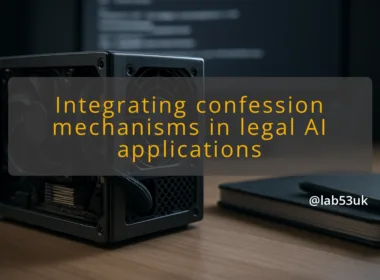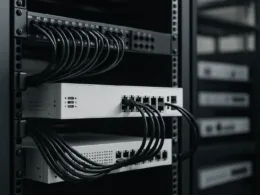Conquer Backup Anxiety: Proven Strategies for Docker Compose and S3-Compatible Storage
Why Docker Compose Immutable Backups Matter Now
Backup strategies have evolved. The focus is on immutable backups, particularly for Docker Compose environments. These backups ensure data integrity and security. An immutable backup cannot be modified or deleted, which is crucial in preventing data loss from accidental deletions or malicious attacks.
Using Docker Compose allows you to manage multi-container applications seamlessly. By integrating immutable backups, you can safeguard your data effectively. The use of S3-compatible storage enhances this strategy. Services like Backblaze B2 or MinIO can provide the necessary infrastructure to store these backups securely.
Immutable backups are essential for compliance with data protection regulations. They help maintain a clear audit trail of data changes and access, which is vital for businesses. Implementing this strategy now can save you from potential headaches in the future. With the rise of cyber threats, ensuring your data is safe from tampering is more critical than ever.
Implementing Restic for Reliable Backups
Restic is a powerful backup tool that works seamlessly with Docker Compose. It supports various backends, including S3-compatible storage. Setting up Restic in a Docker environment is straightforward. You can create a Docker container running Restic and schedule backups easily.
To implement Restic, start by creating a `docker-compose.yml` file. Define the Restic service, specifying the image and necessary environment variables. These variables typically include the storage backend and authentication details. For example:
yaml
version: ‘3’
services:
restic:
image: restic/restic
environment:
– RESTIC_REPOSITORY=s3:s3.amazonaws.com/mybucket
– RESTIC_PASSWORD=mysecretpassword
volumes:
– ./backups:/backups
This setup allows Restic to back up data to your specified S3 bucket. You can run backups manually or automate them using a cron job. Restic’s speed and efficiency make it an excellent choice for Docker environments, ensuring your data is backed up reliably.
Ensuring Integrity with S3 Backup Verification
Backup verification is a critical step in ensuring your data is safe. Using S3-compatible storage, you can implement verification processes to check the integrity of your backups. This involves comparing the backed-up data against the original to ensure it hasn’t been altered or corrupted.
One effective method is to use Restic’s built-in verification tools. After running your backup, you can execute a verification command to check the integrity of the backed-up data. This command will identify any discrepancies between the backup and the original source.
In addition, you can set up automated verification processes. Schedule regular checks using cron jobs to run verification commands against your S3 storage. This proactive approach helps identify issues before they become serious problems, ensuring your data remains intact and accessible.
Effective Backup Rotation Strategies
Backup rotation is essential for managing storage space and ensuring data availability. A well-planned rotation strategy involves keeping multiple backup versions while deleting older ones. This approach balances data retention with storage efficiency.
One common strategy is the 3-2-1 rule: keep three copies of your data, on two different media types, with one copy offsite. Implementing this with Docker Compose is straightforward. You can configure multiple Restic backup jobs, each targeting different storage solutions.
Automate the rotation process by scheduling Restic to prune old backups. The `restic prune` command removes unnecessary data, freeing up space while maintaining the latest backup versions. This strategy ensures you always have accessible backups without overwhelming your storage resources.
Automating Backups with Cron Containers
Automation is key to a reliable backup strategy. Using cron containers, you can schedule your Docker Compose backups effortlessly. A cron container runs a cron daemon, allowing you to define jobs that execute at specified intervals.
To set this up, create a new service in your `docker-compose.yml` file for the cron job. This service will run a command to execute your Restic backup at regular intervals. For example:
yaml
cron:
image: alpine
volumes:
– ./backups:/backups
entrypoint: /bin/sh -c \”echo ‘0 /usr/local/bin/restic backup /backups’ | crontab – && crond -f\”
This configuration runs a backup every hour. Adjust the timing based on your needs. Automating backups reduces the risk of human error and ensures your data is consistently protected.
Managing Object Storage Lifecycle for Cost Efficiency
Managing the lifecycle of your backups is crucial for cost efficiency. S3-compatible storage services often provide lifecycle management policies. These policies automatically transition or delete data based on specified criteria, helping you manage storage costs effectively.
For instance, you can set rules to move older backups to cheaper storage classes after a certain period. This ensures you retain necessary data while optimising costs. Implementing these policies within your Docker Compose setup can be done through the storage provider’s console or API.
Regularly review and adjust your lifecycle policies. This proactive management ensures you are not only compliant with data retention policies but also keeping costs in check.
How to Deploy This Backup Strategy
Deploying this backup strategy requires careful planning and execution. Start by defining your backup requirements, including the data to be backed up and the frequency of backups. Next, set up your Docker Compose environment, ensuring all necessary services are defined in your `docker-compose.yml` file.
Integrate Restic and configure it to work with your chosen S3-compatible storage. Automate the backup and verification processes using cron containers. Finally, implement lifecycle management policies to optimise your storage costs.
Regularly test your backup and restore processes. This ensures you are prepared for any data loss scenario. By following this structured approach, you can conquer backup anxiety and ensure your data is safe and accessible.
Feel free to share your thoughts or experiences with backup strategies in the comments.








